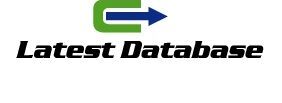Collecting phone number data through forms is a critical step for many businesses aiming to engage customers via calls or SMS campaigns. However, designing an effective phone number input form requires balancing ease of use with accuracy and data validation to ensure clean, usable data. One fundamental tip is to use input masking and formatting guides. Input masking restricts the format as the user types, helping them enter the phone number in the correct pattern without confusion. For example, showing a placeholder like “+1 (_) _-” guides U.S. users to input the country code, area code, and number in a standardized way. For international forms, including a country code dropdown or automatic country detection based on IP address can simplify input and reduce errors. Libraries like Google’s libphonenumber or plugins for popular form builders can automate much of this formatting and validation, improving user experience and reducing abandoned forms.
Beyond formatting, validation is key to collecting
accurate phone numbers. Implement real-time validation as users input their numbers, giving immediate feedback on errors such as missing digits, invalid characters, or unsupported country codes. Avoid allowing free-text input without constraints, which often results in messy data with spaces, letters, or special characters. Server-side validation should complement client-side checks to catch any malformed or malicious input. Additionally, ask for consent explicitly if you plan to send marketing messages, complying with regulations like GDPR or TCPA. Clearly explain why you’re collecting the phone number and how it will be used to build trust and reduce opt-out rates. Including an optional checkbox for marketing consent bosnia and herzegovina phone number list or SMS alerts also helps with legal compliance and improves data quality by ensuring only willing recipients are contacted.
Finally, think about the overall user journey and
form design to maximize submissions while maintaining data quality. Keep the phone number field prominently visible but avoid making i t tailored landing pages overwhelming—consider progressive disclosure, where the phone number input appears only after users fill out initial fields. Use auto-formatting to convert numbers into international formats on submission to standardize your dataset. Testing the form across different devices, screen sizes, and browsers ensures accessibility for all users. If possible, offer alternative contact methods or verify the fax marketing phone number through OTP (one-time password) verification to ensure it’s active and owned by the user. By implementing these tips, you can build phone number data collection forms that not only improve accuracy but also enhance user trust and engagement—key factors in any successful communication strategy.






